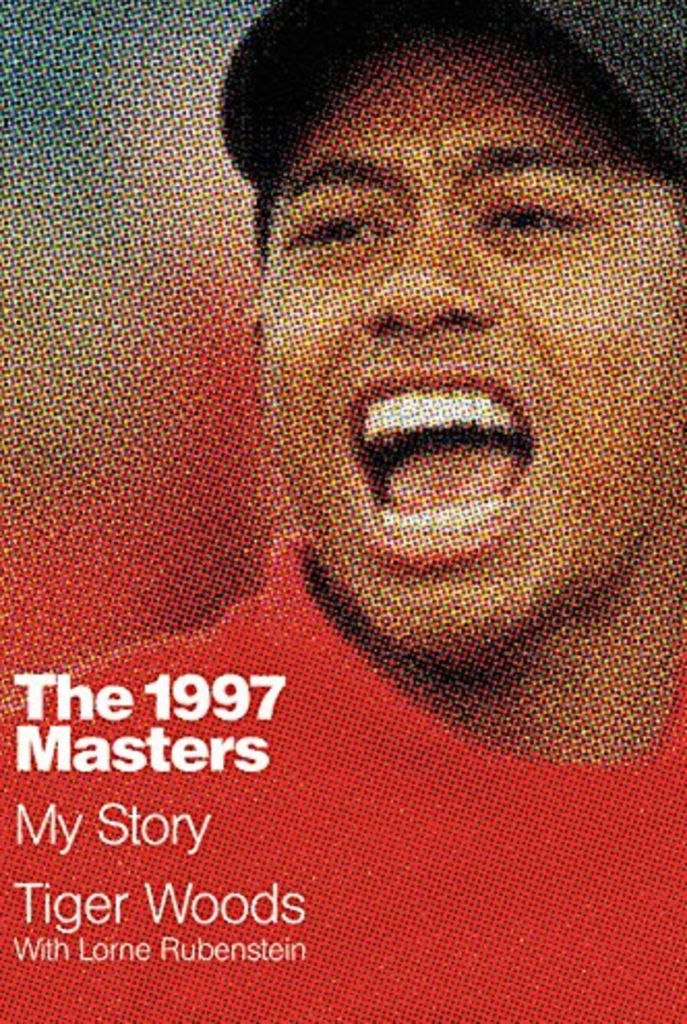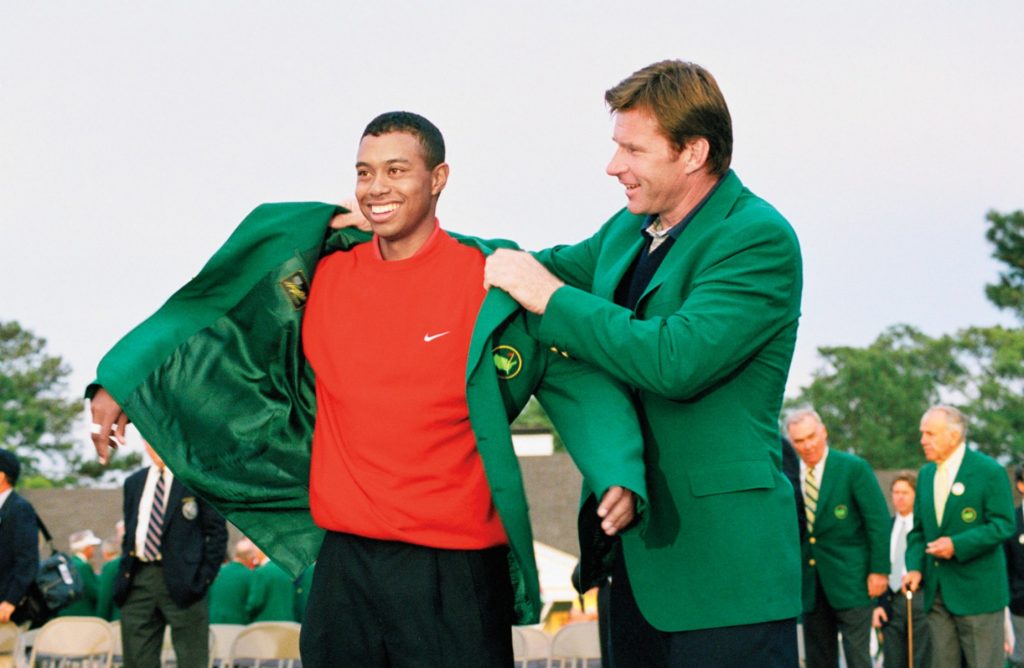Tiger Woods, we have come to learn, traditionally doesn’t give you much. Even if you’re not familiar with (as so many in the media are) his gift of the non-answer, you learn somewhat early on in Tiger Woods’ new memoir, The 1997 Masters: My Story (200 pages, Grand Central Publishing), that revealing too much was something his father cautioned against and forged into his budding superstar. “That wasn’t my nature and never would be,” he writes. “…I wasn’t known as a ‘good quote’ or a ‘good interview.’ … I wasn’t trying to be cagey or play with the media, but I was wary. I didn’t know who I could trust, and so I wasn’t going to say whatever came to my mind.”

It may then seem at least a little surprising that Woods has written a book, guided by Canadian Golf Hall of Fame writer Lorne Rubenstein, that takes us on such a close examination of his journey to his first green jacket in April 1997, as transformative a moment for Woods as it was for golf and really the public perception of the game.
Woods’ naturally constraining predisposition still holds on occasion (do not expect to read any secret revelations about Augusta National or fellow golfers or obviously anything remotely salacious), but he peels away enough layers to show us his truth about what we remember of that epic week 20 years ago. While the chapters are framed mostly as the days of that week, in truth, though, each page takes us backwards and forwards from the specific time and place of April 1997 and Augusta, Georgia. Rubenstein seamlessly mixes this retelling with both Woods’ 21-year-old voice and that of the man he’s now become.
For as methodical as Woods tells his story (his recall of every shot and situation is all as if it were 20 minutes ago, not 20 years), it is often as vivid on the printed page as it was in person. Indeed, from the opening pages, you immediately sense how incredible the feat was. You feel the energy and the electric pace of events in just the way the world stood transfixed watching his runaway victory 20 years ago.
The book starts with Woods’ walk between the ninth green and tenth tee during his first round. He had opened with an improbable 40 on the front nine, and while a normal human golfer might have collapsed under the already colossal weight of expectations, Woods then as always was resolute. “I knew one thing above all as I walked to the tenth tee: My start wasn’t going to finish me.”

That singular focus, that unadorned clarity in tone, describes both Woods at that moment, as well as during seemingly every step he took that entire week and, naturally, how he goes about page after page of this detail-rich reminiscence. Veteran observers will be reminded of moments they’d forgotten, but there are plenty of memories that also might come as a surprise: His 59 in a practice round at home with buddy Mark O’Meara, his younger self watching the Masters on television in 1986 and the question he would later ask Jack Nicklaus about that other famous Masters Sunday, his use of the Golf Channel’s video library to study Augusta National’s historically confounding greens, how a persimmon driver figured in his Masters preparations, a special request he made to Augusta National chairman Jackson Stephens at the start of the week, and the trips to Arby’s every night in Augusta that became “an absolute must.”
Above anything else, it is an invaluable, living history of Woods’ mind and actions as he moved through each round, as much a guide in championship thinking as any book Jones or Hogan or Nicklaus ever produced. He reminds us of his controlled aggression in dismantling a golf course that to us he made look defenseless, yet he knew to be layered with subtle frustrations. We also see the developing amateur champion and young professional coming to understand how to control his swing, his game and his life both inside and outside the ropes as an instant icon.
But where the book really comes to life is when, occasionally, Woods goes off script in talking about his children, his foundation and, especially, his parents. As he praises the contributions they’d made to his mental game and to his understanding of race, we see Woods more as the grateful, reflective thinker than the professional athlete they had trained to “stomp” on the other players, to be “an assassin.” In addition to talking about his ailing father’s crucial input the week of the 1997 Masters, Woods openly reflects on their special bond: “He taught and inspired me and helped me gain confidence in myself so that I could go out into the world—fly on my own, and to learn from my mistakes….I miss my talks with my father, I miss his counsel and his courage. I miss him every day, in oh so many ways.”
There’s even a chapter devoted to Woods’ thoughts on the course changes his dramatic, record-breaking win surely brought to Augusta National, and those words are as harsh and as unfiltered as Woods has ever been. Lamenting the decision to lengthen and refortify Augusta National as a result of modern club and ball technology, Woods offers this candid assessment: “The Augusta National I played in 1997 doesn’t play at all like the course now,” and later, “I don’t see how anybody could say it’s a good thing that the ball is going so far. …If you put today’s players on the Augusta National course I played in ’97, with the equipment we use today, somebody would break 60.”
There’s no question The 1997 Masters: My Story is a powerful historical document. But just as he was then, Woods writes 20 years later with some cautious distance, holding back a layered emotion here, a reflected wisdom there, a deeper set of truths that he’s still locked away in his heart, mind and soul. Woods may or may not be a control freak, but at his best he was always in control of himself and almost any situation. There’s a wish that he might allow himself, now, after all the triumph and tumult of the last two decades, to let loose a little more completely in these pages, to paint for us a picture of a vivid technicolour life, but this time using colours only he knows.
In a way, this memoir is much like the man and his career, especially in its current melancholy uncertainty. We sit here 20 years later awestruck at every turn of the page, thrilled at watching a movie whose every line we thought we already knew by heart but as it turns out did not. And yet, perhaps unfairly, we want another glimpse of that never-before-seen kind of magic that we first saw in 1997. Some of us can’t help but believe there has to be more to come.



